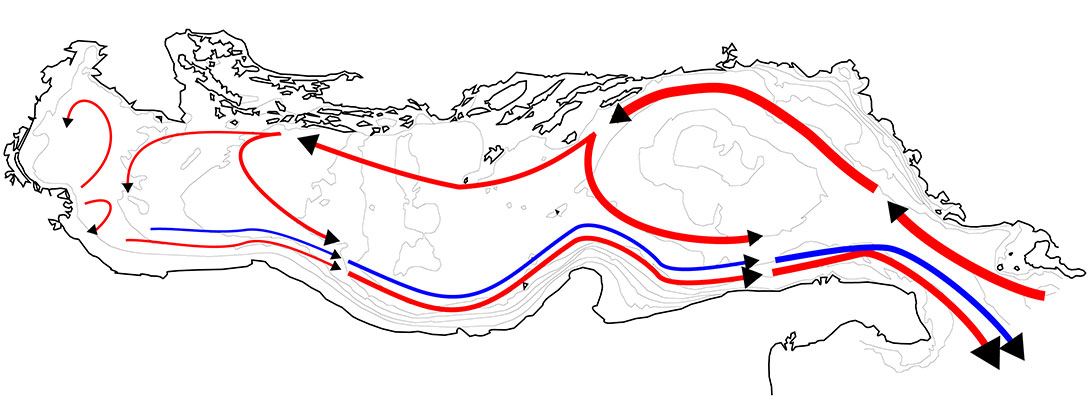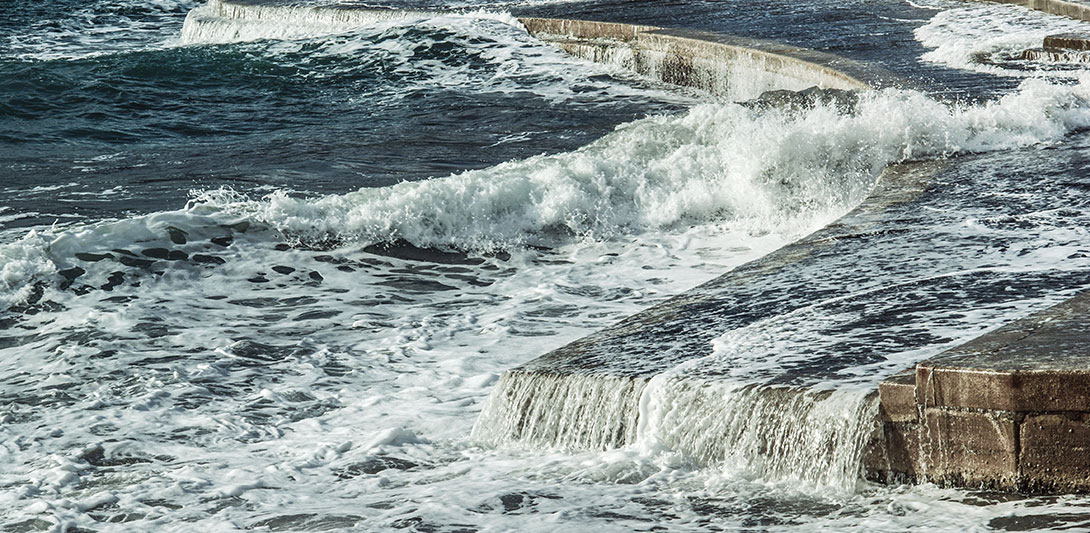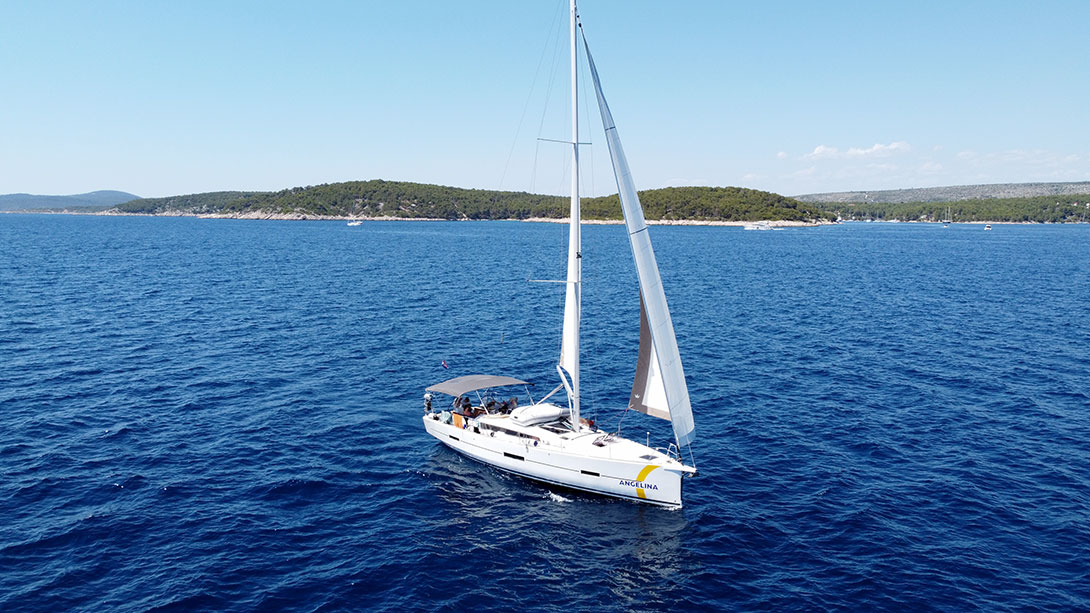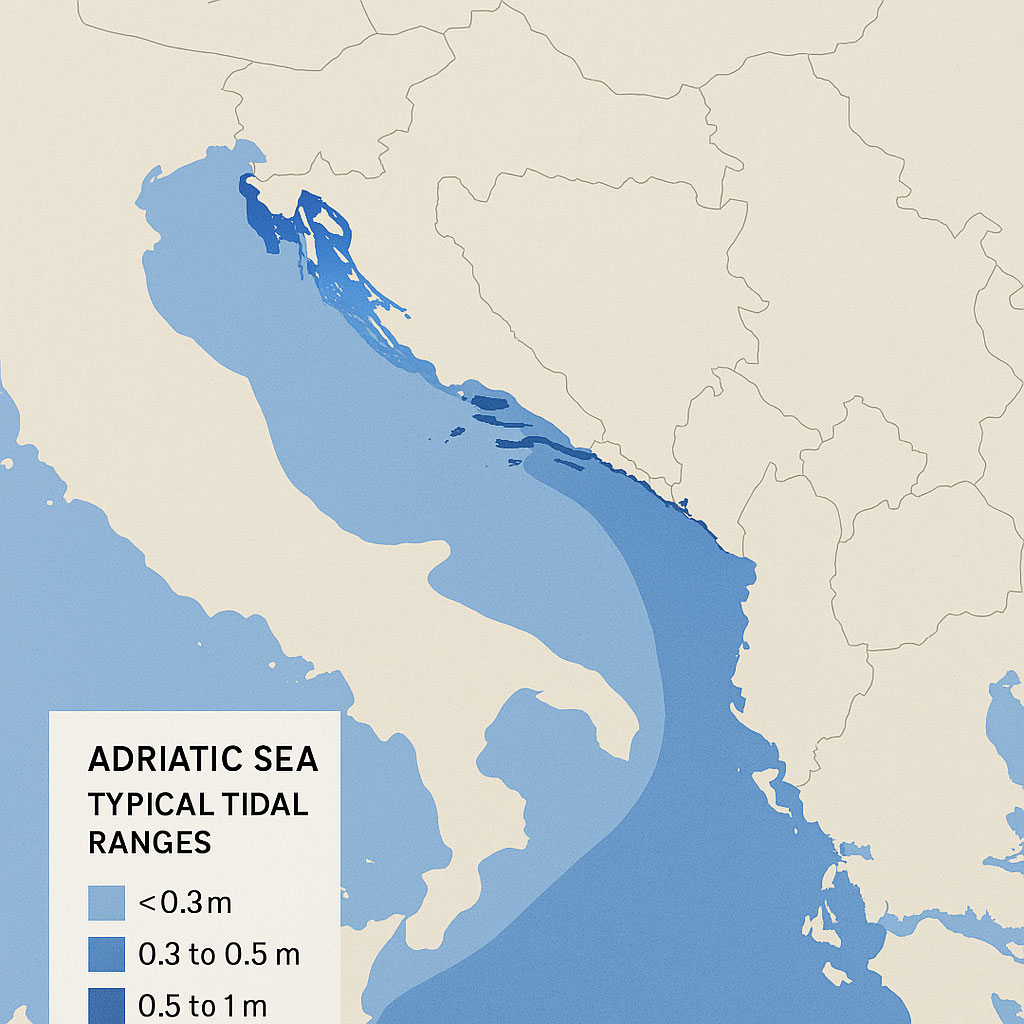Adriatic Sea Currents Explained: Is the Adriatic Sea Tidal?
Adriatic Sea currents and Tides
Adriatic Sea currents in Croatia are influenced by factors such as tidal movements, wind strength and direction, air pressure, temperature, and salinity of the sea. For those wondering is the Adriatic Sea tidal, the answer is yes - though the tidal range is relatively small, it still plays a role in shaping local currents. However, it is essential to note that these currents do not change drastically and pose no significant threat to sailing or anchorage safety.
The Adriatic Canvas: Understanding Currents

Image source: Wikiwand
Tides in the Adriatic Sea
To know anything about the influence of tides on the sea current, it is necessary first to know something more about this phenomenon. The essential thing you need to know is that the sea level during the day, more precisely in 24 hours and 48 minutes, usually rises twice to its highest point and falls twice to its lowest level, that the tides, or low tides, alternately last approximately 6 hours and 12 minutes.
When changes in standard conditions occur and what the tide levels are, it is easiest to find out from the tables published by the Croatian Hydrographic Institute (HHI) and the Institute for Oceanography and Fisheries (IZOR) from Split.

Source: IZOR
Sea level changes affect the strength of the sea current, known as the tidal coefficient. This coefficient is determined by the speed and strength of the current, which in turn is influenced by the difference between high and low tide. During high tides, the sea level rises or falls at varying speeds. The tidal range varies by 1/12 during the first and last hours, 2/12 during the second and fifth hours, and 3/12 during the two central hours. As a result, the current is at its strongest during the third and fourth hours of high or low tide.
Although relatively modest, the Adriatic Sea is tidal, with coefficients in this region ranging from 0 to 100. In the southern part of the region, the difference in tidal height rarely exceeds 40 centimetres. However, during a strong storm, the tide can rise significantly in some narrow channels and bays. This phenomenon is typical of the large and deep bays in the southern Adriatic. Although sea currents can be challenging to detect in the Adriatic, they can be felt while manoeuvring a boat in harbours or near river mouths. The speed of the currents varies depending on the area and season, with an average speed of approximately 0.5 knots. However, it is essential to be aware that sometimes, they can reach a speed of up to 4 knots.
Long-term sea level measurements show that the average everyday tidal range along the eastern Adriatic coast is 22 cm at Dubrovnik, 23 cm at Split, 25 cm at Zadar, 30 cm at Bakar, and 47 cm at Rovinj.
The tidal movements in the Adriatic Sea are generally small, but sometimes larger amplitudes can occur. The salinity of the Adriatic Sea is lower than that of the Mediterranean Sea because it receives about one-third of the freshwater that flows into the Mediterranean, making it a dilution basin.
Adriatic Sea Currents Explained: Sailing Tips for Safe Navigation

The Adriatic Sea, nestled between the Balkans and the Italian Peninsula, is influenced by various currents, each with its characteristics. The Adriatic is semi-enclosed, meaning its currents result from complex interactions between local winds, tides, and broader oceanographic phenomena.
The critical currents in this region include:
The Adriatic Current: This dominant current flows from south to north along the eastern coast of Italy and directs itself into the Adriatic Sea. It then bifurcates, with one branch moving northward and another turning south along the Croatian coast.
The Cyclonic Gyre: Inside the Adriatic, this system involves two interconnected gyres rotating counterclockwise, influencing the movement of water and creating varying speeds and directions in different areas.
The Bora and Jugo Winds: Remember that local winds like the Bura (northeasterly) and Jugo (southeasterly) significantly impact currents and can create difficulties while trying to moor your boat. The Bura tends to cause short-term intense currents, while the Jugo can lead to long-lasting, steady currents along the Croatian coastline.

Is the Adriatic Sea Tidal? A Sailor’s Guide to Currents and Conditions while sailing in Croatia.

- Chart Your Course: Before setting sail, familiarize yourself with local charts, weather forecasts, and tidal predictions. Stay updated on wind patterns and sea conditions changes, especially during peak sailing seasons.
- Utilize Local Knowledge: Leverage the expertise of local sailors and charter companies with invaluable insights into navigating the Adriatic. Considering the currents and prevailing winds, they can guide the best routes and safe harbours.
- Mind the Weather: Keep a close eye on weather patterns, mainly the Bora and Jugo winds. These winds can significantly impact sea conditions, causing abrupt current changes and creating challenging sailing conditions.
- Tacking Technique: When sailing against prevailing currents or winds, the correct technique can make a substantial difference. Work with the currents and winds to optimize your sailing experience, conserving energy and time.
- Anchoring Considerations: Consider the current and the possible future sea current direction and strength when choosing anchorages. Opt for sheltered bays or ports that offer protection against prevailing currents and winds.
The Adriatic Sea experiences weaker tides compared to other seas and oceans. This is because it is a semi-enclosed body of water with narrow connections to the Mediterranean Sea, reducing the impact of tidal fluctuations. The tides in the Adriatic Sea are known as micro-tidal and have an average range of about 0.3 to 0.5 meters (1 to 1.6 feet). Several factors influence the tides, including the shape and depth of the sea, wind patterns, and coastal geography. The complex coastline, with its many islands and shallow areas, can cause local variations in tidal patterns.
It is important to note that even though the tides in the Adriatic Sea are not as noticeable as in other regions, they still play a significant role in the sea's dynamics and can affect navigation, currents, and coastal processes.
FAQ about Adriatic Sea Currents & Tides:
Yes, the Adriatic Sea does have tides, but they are relatively small compared to oceans and some other seas.
Tidal Characteristics of the Adriatic Sea:
Tidal Range: The tidal range (the vertical difference between high tide and low tide) in the Adriatic Sea is typically less than 1 meter. In most places, it's around 30 to 50 centimeters, but in northern areas like the Venetian Lagoon, it can reach up to 1.2 meters during specific conditions such as spring tides or storm surges.
Type of Tides: The Adriatic experiences semi-diurnal tides, meaning there are two high tides and two low tides each day, though in some parts it may behave more like a mixed tidal system.

Influencing Factors:
The shape and orientation of the Adriatic (long and narrow) amplifies tidal effects in the northern part.
Weather conditions like wind (e.g., sirocco and bora) can significantly affect water levels, sometimes more than the tides themselves.
Air pressure changes can also cause sea level variations in the basin.
Notable Phenomena:
In Venice, tides (locally called acqua alta) are particularly important because they contribute to the periodic flooding of the city. Similar flooding issues can occur in other low-lying coastal towns, but Venice is the most iconic example.



